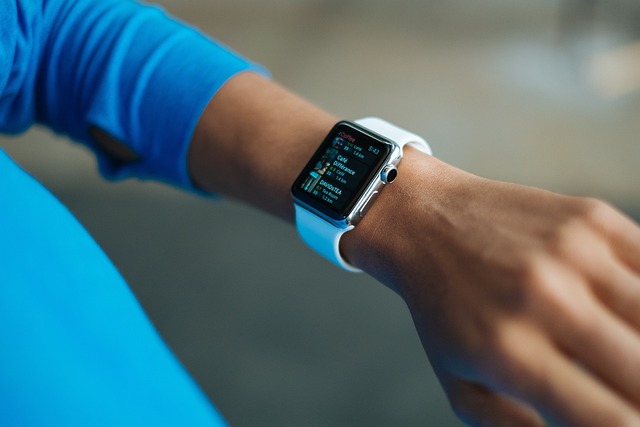Cardio fitness assesses your body’s ability to do a dynamic and rhythmic activity at a moderate to high intensity for prolonged periods of time. Cardio activity not only burns calories and aids in weight management, but it also improves cardiovascular fitness.
Cardio activities are one tool in the fight against inactivity and obesity, but the advantages last a lifetime. The better your fitness, the better you will be able to handle tasks like keeping up with the kids, working long days of yard work, or other domestic projects.
What Exactly Is Cardio Fitness?
Cardio fitness is the ability of your heart, lungs, and organs to consume, transfer, and use oxygen throughout a workout. Your overall fitness is determined by the interaction of your circulatory, respiratory, and skeletal systems.
When all of these systems perform well together, fitness improves. The only way to train these systems to work together is to exercise consistently.
Cardio Fitness Evaluation
To determine your degree of fitness, you must first measure it. One method is to just keep track of your own workouts. Keep track of everything you do, how long you do it for, and how hard you work. Then you may seek trends.

Pay attention to your heart rate of perceived exertion, or use a heart rate monitor to ensure you’re operating in your goal heart rate zone. Use a scale of 1 – 10 to describe how you feel at various levels of intensity. Exercising at a slow pace is a level 2 or 3. That would be closer to a 10 if you were sprinting all out.
More difficult exams appeal to seasoned exercisers, professional athletes, and racegoers. Tests can calculate the maximum amount of oxygen your body can consume and need. These tests can also assist you in determining your maximal heart rate, which is a critical component of all main goal heart rate zone calculations.
Fitness assessments and scores are included in smartwatches and several fitness bands that measure resting and workout heart rates. Fitbit devices with heart rate tracking, for example, provide a cardio fitness score. Garmin GPS sports watches and some fitness bands will provide VO2 max data.
Without any complicated equipment, you may perform a Rockport walk test or a three-minute step test. Try to take one or both of these tests every few weeks to see how you are progressing. When you watch those numbers alter, it might be motivational. Having something physical to look at is often more effective than simply knowing it in your head.
Treadmill Evaluations
Treadmill tests can be used to assess your cardiovascular fitness. These are usually given by a professional in a gym or a lab and may include working up to high intensity.
The graded exercise test consists of a long series of intervals on the treadmill while blood pressure and heart rhythms are monitored.
Working on a treadmill while your blood pressure, heart rate, and perceived exertion are all measured is also part of the Bruce protocol exam.
The treadmill and Bruce protocol tests can be expensive. Other tests that you can perform on your own that do not require EKG machines or blood pressure monitors are available.
Step Test in 3 Minutes
One of the most basic methods is the three-minute step test. You’ll need a 12-inch step and a metronome, timer, or metronome app on your phone for this test.
For 3 minutes, step up and down to the metronome, then sit down. Count each beat of your heart rate for one minute. It’s ideal to use a heart rate monitor or a heart rate app to view each pulse. Your ratings can be found in the charts below.
Ratings for Women Based on Age
| 18-25 | 26-35 | 36-45 | 46-55 | 56-65 | 65+ | |
| Excellent | 52-81 | 58-80 | 51-84 | 63-91 | 60-92 | 70-92 |
| Good | 85-93 | 85-92 | 89-96 | 95-101 | 97-103 | 96-101 |
| Above Average | 96-102 | 95-101 | 100-104 | 104-110 | 106-111 | 104-111 |
| Average | 104-110 | 104-110 | 107-112 | 113-118 | 116-121 | 116-121 |
| Below Average | 113-120 | 113-119 | 115-120 | 120-124 | 119-127 | 123-126 |
| Poor | 122-131 | 122-129 | 124-132 | 126-132 | 129-135 | 128-133 |
| Very Poor | 135-169 | 134-171 | 137-169 | 137-171 | 141-174 | 135-155 |
Ratings for Men Based on Age
| 18-25 | 26-35 | 36-45 | 46-55 | 56-65 | 65+ | |
| Excellent | 50-76 | 51-76 | 49-76 | 56-82 | 60-77 | 59-81 |
| Good | 79-84 | 79-85 | 80-88 | 97-93 | 86-94 | 87-92 |
| Above Average | 88-93 | 88-94 | 88-95 | 95-101 | 97-100 | 94-102 |
| Average | 95-100 | 96-102 | 100-105 | 103-111 | 103-109 | 104-110 |
| Below Average | 102-107 | 104-110 | 108-113 | 113-119 | 111-117 | 114-118 |
| Poor | 111-119 | 114-121 | 116-124 | 121-126 | 119-128 | 121-126 |
| Very Poor | 124-157 | 126-161 | 130-163 | 131-159 | 131-154 | 130-151 |
The Rockport Walk Examination
The Rockport walk test is considerably more straightforward than the others. Warm up before walking a mile at a quick pace, either on the treadmill or outside.
To know where you rank, simply record your heart rate and training time and enter your findings into a Rockport 1-mile walk calculator. It’s preferable to perform this exam on a track so you can see how far you’re traveling.
How to Increase Cardiovascular Fitness
Improving your aerobic fitness is straightforward, if not always uncomplicated. Cardio should be done on a regular basis to improve. Consistency is the key to increasing endurance and fitness, and there are several methods for doing so, including the following.
Steady training
Running, walking, utilizing the elliptical, or doing another cardio exercise at a moderate speed for 20 minutes or longer constitutes this sort of cardio. You build endurance for your heart and lungs, as well as your entire body, to be able to endure longer during cardio since it lowers blood pressure and improves your heart’s and lungs’ ability to carry oxygen-rich blood throughout your body.
Begin with what you can handle, even if it’s only for 20 minutes. Increase the length of each workout by a few minutes so you’re going longer and longer while maintaining a moderate pace. When you can work out continuously for 30 minutes, you can progress to higher degrees of intensity.
Interval Training entails going fast or hard and then slowing down to recuperate, repeating these intervals throughout the workout. Interval training can help you increase endurance faster than steady-state exercise, especially if you push yourself well beyond your comfort zone, at around a level 9 on the perceived effort scale.
Combine and Contrast
Mixing steady-state and interval workouts throughout the week is one of the best strategies to improve fitness. Too much interval training can lead to injury or overtraining, while too much steady-state training can be tedious.
Start with three or four workouts per week as a beginning, focusing on two steady-state workouts, like a basic endurance workout, and one interval routine, such as a novice interval workout.
Precautions
When improving your cardiovascular fitness, avoid overtraining. This will happen if you exercise too much, don’t recuperate between exercises, don’t eat enough, don’t get enough sleep, or any combination of these issues.
Make sure to take rest days or active rest days that incorporate modest exercise like walking. Rest will aid your recuperation, allowing you to be ready for the following training session and less likely to get an injury. Overtraining can be difficult to recover from once it has occurred; thus, avoiding it is preferable.
To Conclude
Being fit is being able to deal with just about everything in your life with endurance and energy.
Working on your aerobic fitness once a week can help make all of your other activities feel easy.
Combining high-intensity and steady-state cardio is a tried-and-true approach for increasing cardiovascular fitness without overtraining. Remember to take rest days and to properly feed and hydrate yourself for the best possible recovery.


